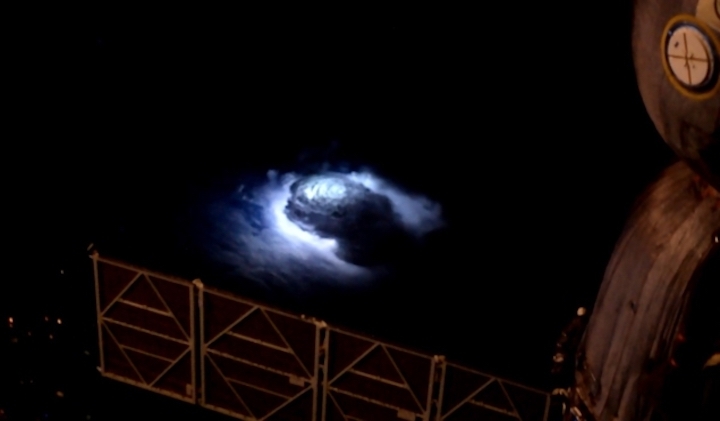7.02.2021

Intense “blue jets” that form during thunderstorms and extend into the stratosphere have been studied in detail by researchers in Denmark, Norway and Spain. Led by Torsten Neubertat the Technical University of Denmark, the team used thunderstorm observations taken aboard the International Space Station (ISS) to work out how the jets form, and how they influence processes higher up in the atmosphere.
Blue jets are short-lived, lightning-like electrical discharges that can appear in the upper reaches of storm clouds. They occur when the potential difference between positively-charged upper cloud regions and negatively-charged boundary layers between the cloud and the stratosphere, exceeds a certain breakdown voltage. At this point, previously insulating air will conduct intense electrical currents.
Within these environments, the jets begin their lives as channels of ionized air called “leaders”. These channels have two propagating tips, which travel in opposite directions due to their opposing charges. As the positive tip propagates upwards towards the negatively charged boundary layer, it transitions into branching discharges called “streamers”, which fan out to form cone-shaped structures that are blue jets.
Electric field pulses
Previous studies have associated blue jets with strong electric field pulses that last between 10-30 µs, and are accompanied by intense bursts of radio waves. Until now, however, researchers had not fully characterized how this behaviour unfolds.
Neubert’s team studied this phenomenon using observations from the ISS, which offers an unimpeded view of the tops of thunderclouds. Measurements were made using the ISS’s Atmosphere-Space Interactions Monitor (ASIM) instrument, which contains three photometers, that measure the intensity of electromagnetic radiation emitted by different atmospheric gases during lightning flashes. In addition, ASIM has two cameras that take images of flashes.
The team used ASIM to monitor a thunderstorm in the central Pacific Ocean in February 2019. During the event, they recorded five intense blue flashes, each lasting around 10 µs. From their measurements, they discovered that the flashes initiated pulsating blue jets between the stratosphere and the ionosphere – the region of Earth’s upper atmosphere where air molecules are ionized by solar radiation.
Neubert’s team concluded that these jets occur as branching streamers are initiated by short, localised leaders, like those found in more familiar cloud-to-ground lightning. As they fanned out, these streamers unleashed waves of ionization in the surrounding air. In addition, the researchers showed how blue jets are accompanied by “elves” in the ionosphere. These dim, expanding glows occur around 100 km above the ground, and can expand to hundreds of kilometres in diameter. Overall, the team’s results offer researchers a far greater understanding of how these dynamic events unfold.
Quelle: physicsworld
